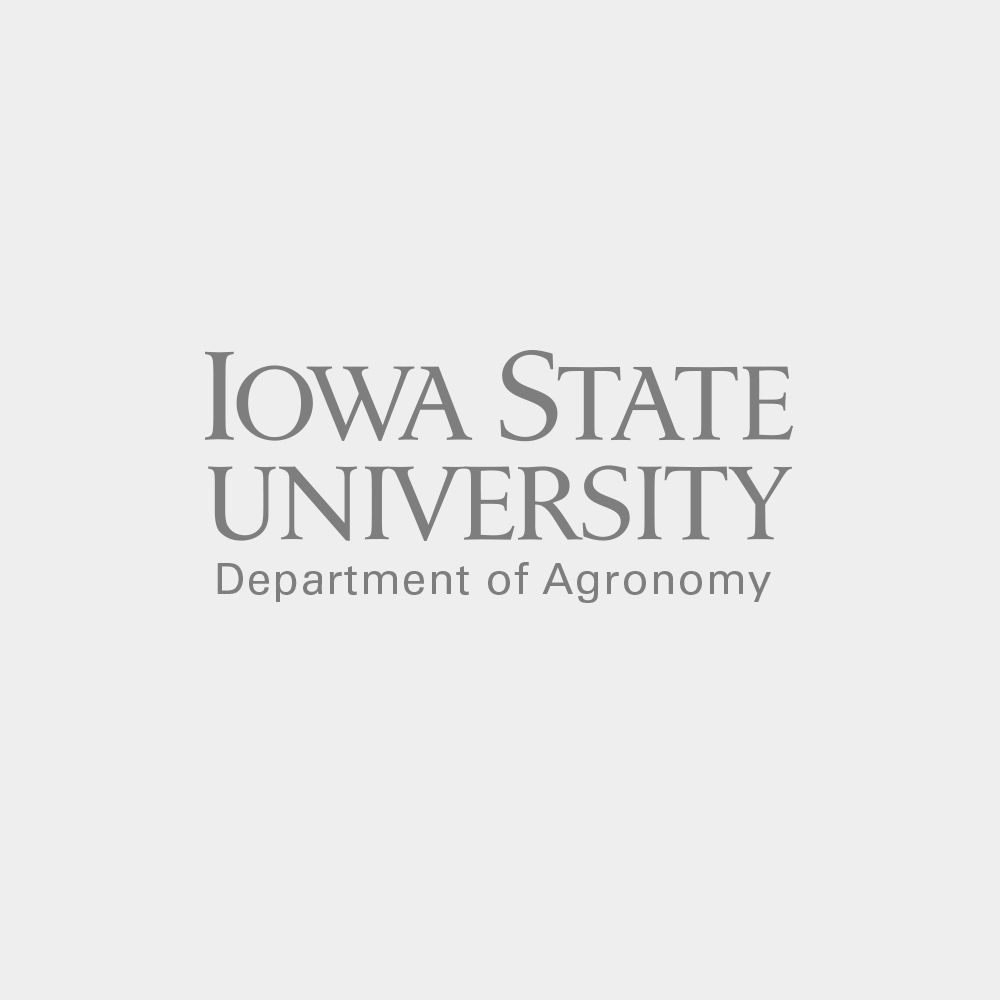
2543 Agronomy 716 Farm House Ln
(515) 294-7843
rhorton@iastate.edu

2543 Agronomy 716 Farm House Ln
(515) 294-7843
rhorton@iastate.edu
About
Robert Horton is a Distinguished Professor in the Agronomy Department at Iowa State University. His program addresses soil physical processes and soil physical properties, with a focus on coupled heat and mass transfer in soil. His fundamental work on coupled heat and mass transfer in soil has greatly enhanced understanding of the role of soils in the following topic areas: climatology (the importance of surface energy partitioning); water quality (the impacts of soil water and chemical movement); agricultural production (the impact of the soil environment on seed and root functions); ecosystem products and services (the impact of the soil environment on microbial function and gas exchange); and environmental investigations (thermal and mass flow methods for remediation of soil pollution). His singular contributions include a comprehensive theory of coupled heat, water and chemical transfer in soil, quantifying in situ unsaturated soil hydraulic conductivity and dynamic subsurface water evaporation, and devising and validating a method to control fertilizer nitrogen leaching. To reach these goals his program includes laboratory and field measurements, sensor development, theory development, and numerical modeling.
Awards
Graduated Magna cum laude, Texas A&M University (1975)
Outstanding technical reviewer for the Soil and Water Division of the American Society of Agricultural Engineers (1989)
Raymond and Mary Baker Agronomic Excellence Award (1989)
Iowa State University Foundation Award for Mid-Career Achievement in Research (1990)
Elected Chairman of Soil Physics Division of the Soil Science Society of America (1993)
Fellow of the American Society of Agronomy (1993)
Fellow of the Soil Science Society of America (1994)
Appointed Chairman of the Soil Science Faculty Committee at ISU (1995-2002)
Appointed to Agronomy Department Head’s Advisory Council (1995-2002)
Superior Paper Award of the American Society of Agricultural Engineers (1997)
Soil Science Research Award of the Soil Science Society of America (2001)
Don and Betty Kirkham Soil Physics Award of the Soil Science Society of America (2002)
CampbellLecturer, Washington State University (2004)
Frontiers of Hydrologic Sciences Lecturer, American Geophysics Union (2005)
Selected as Distinguished Professor, Iowa State University (2006)
Honorary Professor at China Agricultural University (2007)
Rossmann-Manatt Faculty Development Award, ISU (2009)
Senior Visiting Professor, Chinese Academy of Sciences (2010)
Pioneer Hi-Bred Professor of Agronomy, ISU (2010-2013)
Kingenta Agricultural Science Award from the American Society of Agronomy (2012)
USDA Multistate Research Excellence Award for W-4188 (2021)
Fellow, American Geophysical Union (2022)
Publications
Dr. Horton on Google Scholar
Recent publications
- Lü, H., Wang, Q., Horton, R., Zhu, Y., 2021. The Response of the HydroGeoSphere
Model to Alternative Spatial Precipitation Simulation Methods. Water 2021, 13,1891. https://doi.org/10.3390/w13141891 - Tekeste, M.Z., Ebrahimi, E., Hanna, M.H., Neideigh, E.R., Horton, R., 2021. Effect of subsoil tillage during pipeline construction activities on near‐term soil physical properties and crop yields in the right-of-way. Soil Use Manage 37, 545-555.
- Vosoughi, P., Taylor, P., Najimi, M., Horton, R., 2021. Effect of Exposure Conditions and Internal Curing on Pore Water Potential Development in Cement-Based Materials. Transportation Research Record 2675, 184–191.
- Wang, Z., Thapa, R., Timlin, D., Li, S., Sun, W., Beegum, S., Fleisher, D., Mirsky, S., Cabrera, M., Sauer, T., Reddy, V.R., Horton, R., Tully, K., 2021. Simulations of water and thermal dynamics for soil surfaces with residue mulch and surface runoff. Water Resour. Res. 57, e2021WR030431. https://doi.org/10.1029/2021WR030431
- Horn, R., Y. Lu, T. Ren, R. Horton, A. Mordhorst, and H. Fleige. 2021. Derivation of the thermal soil functions by grain size and pore size distribution as a basis for in situ predictions of the soil heat balance. Die Bodenkultur: Journal of Land Management, Food and Environment 72:33–43, 2021. DOI: 10.2478/boku-2021-0004
- Horton, R. 2021. Mentoring graduate students to help them grow academically and personally. CSA News 66:42-44.
- Genc, D., J.C. Ashlock, B. Cetin, K. Cetin, M. Mahedi, and R. Horton. 2021. Comparisons of soil temperatures and volumetric water contents between the center and shoulder locations of granular roadways. Transportation Research Board TRBAM-21-02745.
- Vosoughi, P., P. Taylor and R. Horton. 2021. PORE water potential development in cement-based materials. Proceedings of the 12th ICCP, pp 314-319. DOI:10.33593/7m31dw5c
- Ebrahimi, E., Tekeste, M. Z., Horton, R., & Hanna, H. M. 2022. Buried pipeline installation impacts on soil structure and crop root decomposition. Agric Environ Lett, 7: e20057. https://doi.org/10.1002/ael2.20057
- Genc, D., J.C. Ashlock, B. Cetin, K. Cetin, M. Mahedi, R. Horton and H. Ceylan. 2022. Monitoring and modeling of soil thermal and hydraulic behavior beneath a granular-surfaced roadway. In: Tutumluer, E., Nazarian, S., Al-Qadi, I., Qamhia, I.I. (eds) Advances in Transportation Geotechnics IV. Lecture Notes in Civil Engineering, vol 165. Springer, Cham. https://doi.org/10.1007/978-3-030-77234-5_72
- Gou, Q., Y. Zhu, H. Lü, R. Horton, X. Yu, H. Zhang, X. Wang, J. Su, E. Liu, Z. Ding, Z. Wang, F. Yuan. 2022. Application of an improved spatio-temporal identification method of flash droughts. Journal of Hydrology 604, 127224. doi.org/10.1016/j.jhydrol.2021.127224
- Peng, W., Y. Lu, M. Wang, T. Ren and R. Horton. 2022. Determining water content and bulk density: The heat-pulse method outperforms the thermo-TDR method in high-salinity soils. Geoderma 407, 115564. doi.org/10.1016/j.geoderma.2021.115564
- Liu, L., Y. Lu, Y. Fu, R. Horton and T. Ren. 2022. Estimating soil water suction from texture, bulk density and electrical resistivity. Geoderma 409, 115630. doi.org/10.1016/j.geoderma.2021.115630
- Genc, D., J.C. Ashlock, B. Cetin, H. Ceylan, K. Cetin and R. Horton. 2022. Comprehensive in-situ freeze-thaw monitoring under a granular-surfaced road system. Transportation Geotechnics, 100758. doi.org/10.1016/j.trgeo.2022.100758
- Xu, M., N. Yao, A. Hu, L.G. Goncalves de Goncalves, F. Abrahão Mantovani, R. Horton, L. Heng and G. Liu. 2022. Evaluating a new Temperature-Vegetation-Shortwave infrared reflectance Dryness Index (TVSDI) in the continental United States. Journal of Hydrology, 127785. doi.org/10.1016/j.jhydrol.2022.127785
- Wang, Z., D. Timlin, D. Fleisher, W. Sun, S. Beegum, S. Li, Y. Chen, V.R. Reddy, K. Tully and R. Horton. 2022. Modeling vapor transfer in soil water and heat simulations: A modularized, partially-coupled approach. Journal of Hydrology 608, 127541. doi.org/10.1016/j.jhydrol.2022.127541
- Ebrahimi, E., M.Z. Tekeste, N.I. Huth, D.L. Antille, S.V. Archontoulis and R. Horton. 2022. Measured and modeled maize and soybean growth and water use on pipeline disturbed land. Soil and Tillage Research 220, 105340. doi.org/10.1016/j.still.2022.105340
- Wen, N., Zhang, J., Zeng, H., Liu, G., & Horton, R. 2022. In-situ tin casting combined with three-dimensional scanner to quantify anecic earthworm burrows. Vadose Zone Journal, e20198. https://doi.org/10.1002/vzj2.20198
- Luo, C., Shi, Y., Timlin, D., Ewing, R., Fleisher, D., Horton, R., Tully, K., Wang, Z. 2022. A multiscale finite element method for coupled heat and water transfer inheterogeneous soils. J Hydrol 612, 128028. https://doi.org/10.1016/j.jhydrol.2022.128028
- Peng, W., Lu, Y., Ren, T., Horton, R., 2022. Analysis of heat pulse measurements in double-layered soils with the heating probe positioned at the layer interface. Geoderma 424, 115987. https://doi.org/10.1016/j.geoderma.2022.115987
- Tong, B., Xu, H., Horton, R., Bian, L., Guo, J., 2022. Determination of long-term soil apparent thermal diffusivity using near-surface soil temperature on the Tibetan Plateau. Remote Sensing 14, 4238. https://doi.org/10.3390/rs14174238
- Zhang, J., Sun, Q., Wen, N., Horton, R., Liu, G., 2022. Quantifying preferential flows on two farmlands in the North China plain using dual infiltration and dye trace methods. Geoderma 428, 116205. https://doi.org/10.1016/j.geoderma.2022.116205
- Zhao, T., Liu, S., Xu, J., He, H., Wang, D., Horton, R., Liu, G., 2022. Comparative analysis of seven machine learning algorithms and five empirical models to estimate soil thermal conductivity. Agr Forest Meteorol 323, 109080. https://doi.org/10.1016/j.agrformet.2022.109080
- Dixon, C., W. Sheng, R. Zhou, R. Horton, and S.B. Jones. 2023. Thermal property standards using granular media with air-pluviation and heat pulse probe measurements. Agricultural and Forest Meteorology 330, 109303. https://doi.org/10.1016/j.agrformet.2022.109303
- Zhang, J., N. Wen, Q. Sun, R. Horton, and G. Liu. 2023. The effect of macropore morphology of actual anecic earthworm burrows on water infiltration: A COMSOL simulation. Journal of Hydrology, 129261. https://doi.org/10.1016/j.jhydrol.2023.129261
- Wang, Z., S. Hua, D. Timlin, Y. Kojima, S. Lu, W. Sun, D. Fleisher, R. Horton, V.R. Reddy, and K. Tully. 2023. Time domain reflectometry waveform interpretation with convolutional neural networks. Water Resources Research 59 (2), e2022WR033895. https://doi.org/10.1029/2022WR033895
- Liu, E., Y. Zhu, H. Lü, R. Horton, Q. Gou, X. Wang, Z. Ding, H. Xu, and Y. Pan. 2023. Estimation and Assessment of the Root Zone Soil Moisture from Near-Surface Measurements over Huai River Basin. Atmosphere 14 (1), 124. https://doi.org/10.3390/atmos14010124
- Kojima, Y., K. Okumura, S. Aoki, K. Noborio, K. Kamiya, and R. Horton. 2023. A four-parameter-based thermo-TDR approach to estimate water and NAPL contents of soil liquid. Geoderma 429, 116263. https://doi.org/10.1016/j.geoderma.2022.116263
- Liu, L., W. Li, Y. Lu, T. Ren, and R. Horton. 2023. Relationship between thermal and electrical conductivity curves of soils with a unimodal pore size distribution: Part 1. A unified series-parallel resistor model. Geoderma 432, 116420. https://doi.org/10.1016/j.geoderma.2023.116420
- Li, W., L. Liu, Y. Lu, T. Ren, and R. Horton. 2023. Relationship between thermal and electrical conductivity curves of soils with a unimodal pore size distribution: Part 2. Estimating bulk electrical conductivity from thermal conductivity. Geoderma 432, 116419. https://doi.org/10.1016/j.geoderma.2023.116419
- Adeel, M., M. Zain, N. Shakoor, M.A. Ahmad, I. Azeem, M.A. Aziz, R.X.S. Tulcan, A. Rathore, M. Tahir, R. Horton, M. Xu, and R. Yukui. 2023. Global navigation of Lithium in water bodies and emerging human health crisis. npj Clean Water 6 (1), 33; https://doi.org/10.1038/s41545-023-00238-w
- He, H., Zou, W., Jones, S.B., Robinson, D. A., Horton, R., Dyck, M., Filipović, V., Noborio, K., Bristow, K., Gong, Y., Sheng, W., Wu, Q., Feng, H., & Liu, Y. 2023. Critical review of the models used to determine soil water content using TDR-measured apparent permittivity. In D. L. Sparks (Ed.), Advances in Agronomy (pp.169-219). (Advances in Agronomy; Vol. 182). Academic Press Inc. https://doi.org/10.1016/bs.agron.2023.06.004
- Zhao, T., Z. Qiao, Y. Zhang, B. Huang, R. Horton, and G. Liu. 2023. Experiments and COMSOL simulations: A comparative study of the heat flux plate method and the gradient method for soil heat flux measurements in barren sand. Agricultural and Forest Meteorology 334, 109436. https://doi.org/10.1016/j.agrformet.2023.109436
- Fu, Y., Horton, R., Ren, T., & Heitman, J. 2023. An unsaturated hydraulic conductivity model based on the capillary bundle model, the Brooks-Corey model and Waxman-Smits model. Water Resources Research, 59, e2022WR034186. https://doi.org/10.1029/2022WR034186
- Horton, R. 2023. Pray, listen, and share ideas with others to enhance your soil physics research. Journal of the Japanese Society of Soil Physics, 154:5-10. https://doi.org/10.34467/jssoilphysics.154.0_5
- Li, L., Y. Lu, T. Ren, and R. Horton. 2023. Quartz contents derived from particle density measurements improve the accuracy of soil thermal conductivity estimates. Geoderma 436 (2023) 116526. https://doi.org/10.1016/j.geoderma.2023.116526
- Fu, Y., L. Liu, Y. Lu, R. Horton, T. Ren, and J. Heitman. 2023. Estimating soil water retention curves from thermal conductivity measurements: A percolation-based effective-medium approximation. Journal of Hydrology 624 (2023) 129898. https://doi.org/10.1016/j.jhydrol.2023.129898
- Fu, Y., B. Ghanbarian, R. Horton, and J. Heitman. 2023. Robust calibration and evaluation of a percolation-based effective‐medium approximation model for thermal conductivity of unsaturated soils. Geoderma 438 (2023) 116631. https://doi.org/10.1016/j.geoderma.2023.116631
- Shakoor, N., M. Hussain, M. Adeel, I. Azeem, M.A. Ahmad, M. Zain, P. Zhang, Y., Li, W. Quanlong, R. Horton, and Y. Rui. 2023. Lithium-induced alterations in soybean nodulation and nitrogen fixation through multifunctional mechanisms. Science of the Total Environment 904 (2023) 166438. https://doi.org/10.1016/j.scitotenv.2023.166438
- Fu, Y., S. Jones, R. Horton and J. Heitman. 2023. Excluding quartz content from the estimation of saturated soil thermal conductivity: Combined use of differential effective medium theory and geometric mean method. Agricultural and Forest Meteorology 342 (2023) 109743. https://doi.org/10.1016/j.agrformet.2023.109743
- Li, K, R. Horton and H. He. 2023. Application of machine learning algorithms to model soil thermal diffusivity. International Communications in Heat and Mass Transfer 149 (2023) 107092. https://doi.org/10.1016/j.icheatmasstransfer.2023.107092

